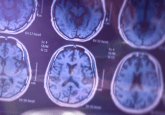Look into my eyes

New Alzheimer’s eye test could assist in the early diagnosis of the disease, based on the density of blood vessels in the retina.
Understanding of Alzheimer’s disease is relatively limited, with no viable treatments or noninvasive diagnostic tools clinically available for the debilitating neurodegenerative disorder. However, a team from the Duke Eye Center (NC, USA) has proposed a test that may be able to detect Alzheimer’s at an early stage.
“We know that there are changes that occur in the brain in the small blood vessels in people with Alzheimer’s disease, and because the retina is an extension of the brain, we wanted to investigate whether these changes could be detected in the retina using a new technology that is less invasive and easy to obtain,” explained Dilraj S. Grewal, a lead author on the study.
Using a noninvasive technology called optical coherence tomography angiography (OCTA), the researchers observed the density of blood cells in the retina. The OCTA machines use light waves to highlight blood flow in every layer of the retina, giving them the ability to detect even the smallest capillaries, some of which were less than half the width of a human hair. This gives much greater detail than previously used methods of imaging blood vessel change such as MRI or cerebral angiogram.
“We’re measuring blood vessels that can’t be seen during a regular eye exam and we’re doing that with relatively new noninvasive technology that takes high-resolution images of very small blood vessels within the retina in just a few minutes,”
In a study of more than 200 people, differences were found in the retinas of those with Alzheimer’s disease when compared to healthy controls. A difference was also found in those with mild cognitive impairment, a factor often presenting as a precursor to Alzheimer’s.
Of the 200 participants, 133 formed the control group, all showing a dense web of blood vessels in the back of the eye. In comparison, in the 39 patients with Alzheimer’s disease, the web was less dense and sparse in places.
The results, recently published in Ophthalmology Retina, suggest that a loss of blood cells in the retina could be a signal for Alzheimer’s disease, presenting a new technique that could be used to allow for earlier diagnosis.
“We’re measuring blood vessels that can’t be seen during a regular eye exam and we’re doing that with relatively new noninvasive technology that takes high-resolution images of very small blood vessels within the retina in just a few minutes,” commented senior author Sharon Fekrat.
“It’s possible that these changes in blood vessel density in the retina could mirror what’s going on in the tiny blood vessels in the brain, perhaps before we are able to detect any changes in cognition.”
“Ultimately, the goal would be to use this technology to detect Alzheimer’s early, before symptoms of memory loss are evident, and be able to monitor these changes over time in participants of clinical trials studying new Alzheimer’s treatments,” Fekrat added.





